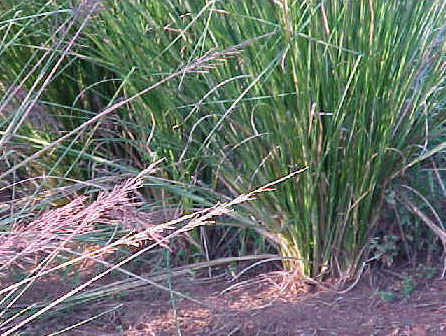A team of scientists from Italy discovered bacteria in the root of a tropical herb whose oil extract is used in the cosmetics and aromatherapy industries, which change the nature of the oil produced in the root

A team of scientists from Italy discovered bacteria in the root of a tropical herb whose oil extract is used in the cosmetics and tanning industries. It seems that these bacteria promote the production of essential oils, but also change the molecular structure of the oil and thus give it different aromas and properties: as an insect repellent, as a bactericide and as an antioxidant.
By examining the root of the tropical herb Vetiver through interdisciplinary research, the microbiologists Pietro Alifano and Luigi Del Giudice, and the plant biologist Massimo Maffei and their colleagues found that the root cells of this plant produce several precursors to the oil, and these are then used to create the complex structure of the oil . The bacteria were found in oil-producing cells as well as in areas closely associated with essential oils.
This herb is the only herb uniquely processed for the essential oil, which consists of chemical units called sesquiterpene [Sesquiterpene - a terpene consisting of three isoprene units (15 carbon atoms)]. The terpenes are mainly produced by plants and are secondary metabolites. Many lubricants, fragrance, protection and color, as well as essential oils, are terpenes. Terpenes in high concentration can be extracted from the resin of trees, especially conifers. Rubber is a polyterpene containing dozens of isoprene units. The carotenes are a group of dyes (pigments) consisting of eight isoprene units that give yellow, orange and red colors to fruits, flowers, leaves and other plant structures. Many terpenes are a component of alkaloids, the largest group of secondary metabolites in plants. They are used in plants as pheromones (communication materials) and in humans as growth hormones. The essential oils also contain alcohols and hydrocarbons, and together with these terpenes are mainly used in cosmetics and the perfume industry. The tanning and flavoring industries could benefit from the increased versatility that these bacteria provide to the aromas and flavors of these oils.
The bacteria responsible for this chemical transformation include alpha-, beta- and gamma-proteobacteria, gram-positive bacteria as well as microorganisms from the Fibrobacteres / Acidobacteria family.
"This research opens up new horizons in the biotech field of biologically active compounds from nature," said Professor Alifano. "The pharmaceutical, flavor and aroma extracts, the perfumery and cosmetics industries will now be able to take advantage of the selected bacterial strains and expand their metabolic libraries."
"The ecological role of the fruitful cooperation between plants and bacteria presents another fascinating aspect" said one of the researchers. "The metabolic interrelationships between the plant, which itself produces a number of simple compounds, and root bacteria, which convert them into a diverse array of biologically active compounds, increase the plant's resistance and present us with new strategies for energy-efficient survival."
